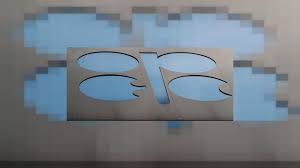OPEC and its allies can celebrate their success in steadying world oil markets when they gather this week. But the coalition will soon be faced with some tough choices.
Last month’s pledge by Saudi Arabian Energy Minister Prince Abdulaziz bin Salman to slash production by a further 1 million barrels a day has buttressed global markets against the latest onslaught from the pandemic. A price rebound to $55 a barrel is shoring up the producers’ revenues without causing an excessive spike.
While that relieves OPEC+ of any need to adjust policy on Wednesday, they’ll need to start considering how long to restrain output — a calculation clouded by the potential return of supply from fellow member Iran.
At the heart of the dilemma is a fundamental tension between the Saudis and their most critical partner in the alliance, Russia. While Riyadh has sought higher prices to cover government spending, Moscow — without the same pressures — agitates to claw back market share.
“Prince Abdulaziz bin Salman’s doctrine that you err on the side of caution has been vindicated,” said Helima Croft, chief commodities strategist at RBC Capital Markets LLC. On Wednesday, “we might get the contours of the arguments that will be made next month.”
Delicate Cuts
The Organization of Petroleum Exporting Countries and its partners have resolved this year to restore some of the 7.2 million barrels of daily output — roughly 7% of global supplies — they continue to idle after making vast production cuts when the pandemic erupted last spring.
The restrictions have proved effective, turning around an oil market that last April briefly saw prices plunge below zero, and throwing a financial lifeline to producers around the world — from tiny African states to corporate giants.
Restoring the halted production, however, is turning out to be a delicate process.
Although OPEC+ is scheduled to revive a total of 2 million barrels a day this year, it agreed a two-month pause after the first 500,000-barrel installment in January as new virus infections menaced fuel demand. Riyadh doubled down on the curbs by announcing an extra 1-million-barrel cutback of its own.
On Wednesday, a panel that oversees the alliance’s strategy — the Joint Ministerial Monitoring Committee — will convene online to assess the outlook. The JMMC is unlikely to recommend new policies, which will instead be tackled at the next full ministerial meeting in early March, according to delegates who declined to be identified.
“The Saudi cut has bought OPEC+ some time,” said Bill Farren-Price, a director at research firm Enverus and veteran observer of the cartel.
The question of what to do next will loom over their discussions on Wednesday.
Prince Abdulaziz’s preference for keeping output constrained has been validated by a bumpy roll-out of vaccines, and renewed lockdowns in key consumers such as China. Major oil traders agree the market won’t recover until air travel picks up, sometime in the third quarter.
Shale Dilemma
Russia on the other hand fears that supporting prices too long will backfire, provoking investment in U.S. shale oil and a flood of new supply that will negate OPEC+’s hard work. At last month’s meeting, Deputy Prime Minister Alexander Novak proposed a production increase, and tried to dissuade the Prince from his unilateral cut.
“It is going to be a hell of fight at the OPEC+ March meeting,” said Helge Andre Martinsen, senior oil market analyst at DNB Bank ASA. “Russia will consider it a massive failure if OPEC+ cuts starts to stimulate growth in U.S. shale again, while at the same time they’re sitting on plenty of spare capacity.”
Russia isn’t the only member that might push for relaxing the curbs.
Iraq is in the grip of an economic crisis and desperately needs the revenues that would come from higher oil sales. The United Arab Emirates is seeking to promote a benchmark oil contract that depends on plentiful output, and last year briefly broke ranks with Riyadh to open the taps.
Then there’s the complication of Iran.
President Joe Biden is seeking to reactivate a nuclear agreement that would lift U.S. sanctions on the Islamic Republic, allowing the return of almost 2 million barrels of daily output. With the end of the “maximum pressure” campaign waged by former-President Donald Trump, Iranian exports have already crept higher.
Still, Secretary of State Antony Blinken says an agreement remains a “long way” off. As the two sides jockey for leverage — and Tehran presses on with uranium enrichment — they could be headed for a new rupture rather than reconciliation, according to RBC’s Croft. Instead of extra barrels, markets may need to brace for “a geopolitical tremor,” she cautions.
But if a deal is struck, OPEC+ will need to choose between cutting output further, or seeing their efforts to drain surplus oil stockpiles founder. It’s unclear how readily Saudi Arabia would make way for the comeback of its political nemesis.
“Iran’s export hike is another emerging challenge for OPEC+,” said Farren-Price. “It’s one they may need to factor into their plans sooner rather than later.”

 Iran Energy News Oil, Gas, Petrochemical and Energy Field Specialized Channel
Iran Energy News Oil, Gas, Petrochemical and Energy Field Specialized Channel



